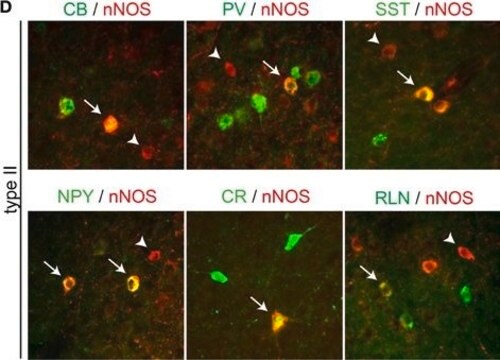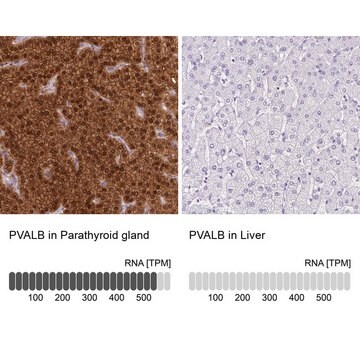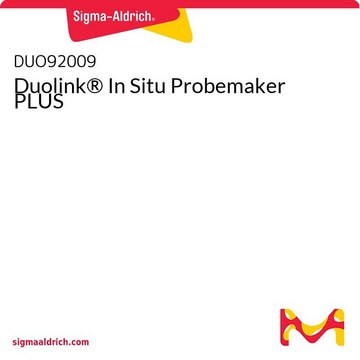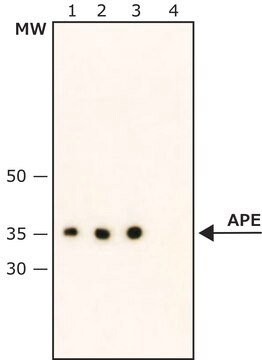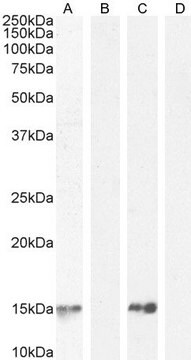Kluczowe dokumenty
SAB4200545
Anti-Parvalbumin antibody, Mouse monoclonal
clone PARV-19, purified from hybridoma cell culture
Synonim(y):
Monoclonal Anti-ALPHA-PARVALBUMIN, Monoclonal Anti-PALB1, Monoclonal Anti-PV, Monoclonal Anti-PVALB (includes EG:19293), Monoclonal Anti-Parv, Monoclonal Anti-Pva
About This Item
Polecane produkty
pochodzenie biologiczne
mouse
Poziom jakości
białko sprzężone
unconjugated
forma przeciwciała
purified from hybridoma cell culture
rodzaj przeciwciała
primary antibodies
klon
PARV-19, monoclonal
Formularz
buffered aqueous solution
masa cząsteczkowa
antigen 12 kDa
reaktywność gatunkowa
rat, human
stężenie
~1.0 mg/mL
metody
immunohistochemistry: 5-10 μg/mL using formalin-fixed paraffin embedded rat cerebellum.
indirect immunofluorescence: 10-20 μg/mL using BLO-11 cells.
western blot: 1-2 μg/mL using mouse muscle extracts.
izotyp
IgG1
Warunki transportu
dry ice
temp. przechowywania
−20°C
docelowa modyfikacja potranslacyjna
unmodified
informacje o genach
human ... PVALB(5816)
rat ... PVALB(25269)
Opis ogólny
Specyficzność
Immunogen
Zastosowanie
- immunohistochemistry
- immunofluorescence staining
- immunolabeling
- to label brain slices for perineuronal net staining
- enzyme-linked immunosorbent assay (ELISA)
- immunocytochemistry
Western Blotting (1 paper)
Działania biochem./fizjol.
Postać fizyczna
Przechowywanie i stabilność
Oświadczenie o zrzeczeniu się odpowiedzialności
Nie możesz znaleźć właściwego produktu?
Wypróbuj nasz Narzędzie selektora produktów.
Kod klasy składowania
10 - Combustible liquids
Temperatura zapłonu (°F)
Not applicable
Temperatura zapłonu (°C)
Not applicable
Wybierz jedną z najnowszych wersji:
Masz już ten produkt?
Dokumenty związane z niedawno zakupionymi produktami zostały zamieszczone w Bibliotece dokumentów.
Klienci oglądali również te produkty
Nasz zespół naukowców ma doświadczenie we wszystkich obszarach badań, w tym w naukach przyrodniczych, materiałoznawstwie, syntezie chemicznej, chromatografii, analityce i wielu innych dziedzinach.
Skontaktuj się z zespołem ds. pomocy technicznej
